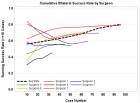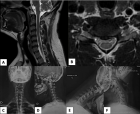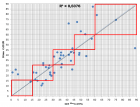About
Articles by
Natural killer cells in patients with hematologic malignancies, solid tumors and in recipients of hematopoietic stem cell transplantation
Published on: 9th December, 2019
OCLC Number/Unique Identifier: 8440596237
Natural killer cells represent the first line of defense against infections and tumors and can be derived from various sources including: bone marrow, peripheral blood, specific types of human stem cells, and certain cell lines. The functions of natural killer cells are influenced by: several cytokines, activating and inhibitory receptors, as well as other immune cells such as dendritic cells and mesenchymal stem cells.
Natural killer cells are attractive candidates for adoptive cellular therapy in patients with hematologic malignancies and solid tumors in addition to recipients of various forms of hematopoietic stem cell transplantation as they enhance antitumor effects without causing graft versus host disease. Several clinical trials have shown safety and efficacy of natural killer cell products obtained from autologous as well as allogeneic sources and used in conjunction with cytotoxic chemotherapy, monoclonal antibodies and novel agents.
The following review, which includes extensive literature review on several aspects of natural killer cells, will give particular attention to: the rising role of natural killer cell therapies in patients with malignant hematological disorders, solid tumors and in recipients of stem cell therapies; preparation and manufacture of natural killer cell products; challenges facing the utilization of this form of cellular therapy including evolution of resistance; and maneuvers that can be employed to enhance the efficacy of natural killer cell therapies as well as suggested solutions to resolve the remaining challenges.
Neutrophils, NETs, NETosis and their paradoxical roles in COVID-19
Published on: 11th May, 2020
OCLC Number/Unique Identifier: 8592950514
The pandemic of COVID-19 has adversely affected the world in many aspects. The health and economic sectors suffer most of the repercussions of this disease. The search for a cure for this rapidly spreading virus which is causing massive life losses worldwide requires clear understanding of the immunopathogenesis of this virus so as to develop pinpointed targeted therapies rather than relying mainly on supportive care measures and drug repurposing to fight this life-threatening virus infection.
Neutrophils, neutrophil extracellular traps (NETs), and NETosis are not well studied not only in COVID-19, but also in coroviruses in general. The review will shed lights on the functions of neutrophils, NETs, and NETosis in various infectious complications as well as in sepsis and acute lung conditions in an attempt to understand their actual roles and in order to help in designing targeted therapies in the near future.
The rising role of mesenchymal stem cells in the treatment of COVID-19 infections
Published on: 7th July, 2020
OCLC Number/Unique Identifier: 8623431074
Infectious diseases are a leading cause of death worldwide [1,2]. The Mid-20th century witnessed most of the antimicrobial discoveries but recently there is dramatic shortage of new classes of antimicrobial agents due to failure to build a sustainable antimicrobial discovery platform [1-4]. For example, antibiotics comprise ˂ 1.5% of the compounds under investigation at the major pharmaceutical and biotechnology companies [1,5].
Varicella zoster virus: The potentially useful virus
Published on: 5th July, 2019
OCLC Number/Unique Identifier: 8174826530
Varicella zoster virus (VZV), a double-stranded DNA virus, is a highly contagious human neurotropic virus that belongs to the alpha group of herpes viruses [1-4]. Primary VZV infection (chickenpox) occurs in childhood then the virus becomes latent in the nerve ganglia [1,5-7]. Reactivation of the virus may occur decades later and cause herpes zoster (HZ) which is manifested by a typical painful skin eruption that has characteristic dermatomal distribution [1,5]. Reactivation of VZV is usually predisposed to: old age; comorbid medical conditions such as diabetes mellitus, chronic obstructive airway disease, and end-stage renal disease; and immunosuppression due to malignancy, autoimmune disorders, immunosuppressive therapies, trauma, cytotoxic chemotherapy, hematopoietic stem cell transplantation (HSCT), and solid organ transplantation (SOT) [1,5-7].
The beneficial effects of varicella zoster virus
Published on: 15th July, 2019
OCLC Number/Unique Identifier: 8186245399
Varicella zoster virus behaves differently from other herpes viruses as it differs from them in many aspects. Recently, there has been growing evidence on the beneficial effects of the virus in immune compromised hosts and these effects are translated into prolongation of survival. The reported beneficial effects of the virus include: (1) stimulation of bone marrow activity in patients with hematologic malignancies and bone marrow failure syndromes, (2) antitumor effects in various hematologic malignancies and solid tumors, and (3) association with graft versus host disease which has anticancer effects. Additionally, there are several reports on the safety of the live-attenuated even in severely immune suppressed individuals and on the emerging role of the virus in cancer immunotherapy. In this review, the following aspects of the virus will be thoroughly discussed: (1) new data on the genetic background, pathogenesis, vaccination, and new therapeutic modalities; (2) bone marrow microenvironment and hematopoiesis; (3) cells involved in the pathogenesis of the virus such as: mesenchymal stem cells, dendritic cells, natural killer cells, T-cells and mononuclear cells; (4) cellular proteins such as open reading frames, glycoproteins, promyelocytic leukemia protein, chaperons, and SUMOs; (5) extracellular vesicles, exosomes, and micro-RNAs; and (6) signaling pathways, cytokines, and interferons.

HSPI: We're glad you're here. Please click "create a new Query" if you are a new visitor to our website and need further information from us.
If you are already a member of our network and need to keep track of any developments regarding a question you have already submitted, click "take me to my Query."
























































































































































